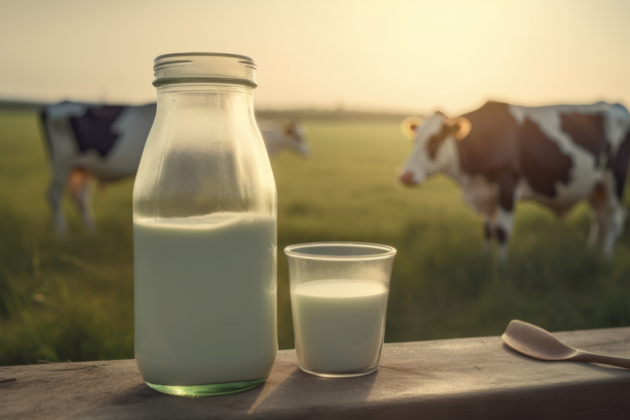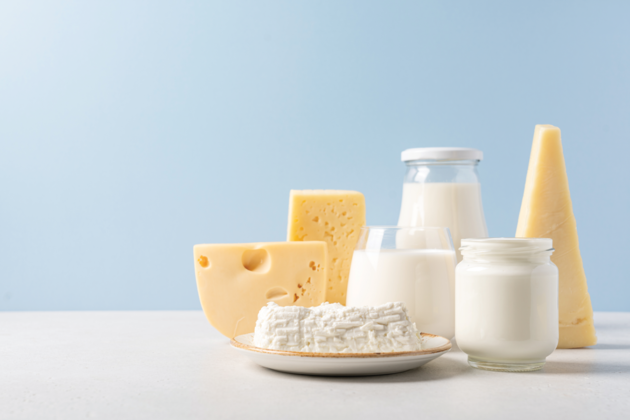
Innovations in Canada’s dairy sector
By Mark Juhasz
Food Trends Dairy Plant-based foods Editor pick Food innovationManufacturers are adopting eco-friendly practices while increasing the health quotient of dairy products
 Fermented drinks like lassi can drive the demand for dairy products due to its clean label and health credentials. Photo © StockImageFactory / Adobe Stock
Fermented drinks like lassi can drive the demand for dairy products due to its clean label and health credentials. Photo © StockImageFactory / Adobe Stock Amid an increasing array of plant-based milks in today’s market, some consumers may feel conflicted about bovine milk. However, indulgent, rich flavour profiles in butters, creams, yogurts, and cheeses from cow’s milk remain a popular choice. Increasingly, dairy companies are responding to consumer trends by producing indulgent products and adding value with claims and commitments to grass-fed, pasture-raised, and organic production while working with simple formulations, and sustainable sourcing and production practices.
In New Zealand, Anchor brand offers an organic, carbon-zero certified butter with a golden colour, which is representative of the country’s pasture-rich diet for its dairy herds. Ireland’s Glanbia has developed Truly Grass Fed with hormone- and antibiotic-free certifications. Its herds are almost completely grass-fed.
Conscious of product quality and growing sustainability concerns, Cow milk cheese producers are implementing new grazing programs, which are certified by independent agencies, to ensure animal welfare, improved land use, nutrient management, soil health and a reduced carbon footprint, all as part of the surge of interest in regenerative agricultural practices. Some brands are using recyclable and eco-friendly packaging to round out the attractiveness of dairy products in addition to their traditional draw.

Cow milk producers are implementing new grazing programs to ensure the industry does its part to address climate change. Photo © sorapop / Adobe Stock
Better health profile
Cow’s milk has advantages in nutritional and processing properties, as well as protein content. From an inflationary perspective, as of June 2022, in a 52-week assessment period, according to Helikon Consulting, the average price of a litre of animal-derived milk was still lower than plant-based milks. Nevertheless, plant-based beverage companies continue to expand product offerings. For example, Perfect Day is contributing its animal-free whey protein to a range of new food products. Whey protein in cow’s milk accounts for approximately 20 per cent of its total protein, while casein is the remaining 80 per cent. Whey protein is a multi-functional, nutritionally complete protein.
As a general category, dairy protein, especially those that are fermented (via a process that breaks down lactose into simple sugars, such as glucose, for easier digestion), help build and maintain muscle, along with essential nutrition from amino acids. In this context, global dairy product launches continue to grow, particularly in sub-sectors like spoonable yogurt (e.g. Icelandic-style Skyr), and drinkable yogurts (kefir and other fermented beverages). Fermentation is the process by which carbohydrates are broken down by micro-organisms such as yeast, bacteria, or fungi. Growing research into the gut-brain axis is advancing opportunities for fermented foods to potentially influence and improve everything, from mood and sleep to immunity and cognitive ability. Fermented foods also enhance the bioavailability of nutrients such as calcium, vitamins, mineral and amino acids. Specifically, fermented dairy products, such as probiotics, can restore gut bacteria balance, improve the immune system, ease digestion, and reduce inflammation or risks, diseases, and allergies associated with the intestinal track. Fermented dairy may also have the ability to improve brain function and mood with increased serotonin production.

Dairy companies are improving formulations to increase the health profile of milk. Photo © Anna Puzatykh / Adobe Stock
In the category of dairy products, familiarity with yogurts, their clean label credentials, and probiotics supporting gut health, are driving the category. In Canada, with an increasingly multicultural society, especially in larger cities, drinkable yogurts could gain further traction in the soft drinks category with carbonated, low-sugar options (think doogh, ayran, and lassi) that have long been popular in west, central, and south Asian cultures. Since consumers are often trying to reduce added sugar, fruit flavours are being incorporated for their natural sweetness. High protein in dairy products, exemplified by Skyr yogurt, continue to move as a new product category. Companies like Liberte, Yoplait, Oikos, Astro, and Danone are all producing high protein yogurt options for the Canadian market.
In premium categories, Brazilian brand Vigor recently launched a probiotic dairy shot called Viv Imune with flavours of lime, honey, ginger, which are associated with positive immunity. Dairy companies are balancing the indulgence of rich flavours with health-focused options, and flavours such as apricot, orange, mango, vanilla, and chocolate. Blended combinations that seek to distinguish from the mainstream include strawberry-chocolate, banana-caramel, coconut-pineapple, or mixed berries. Canadian dairy cooperative Gay Lea now offers eight different varieties of premium butter, including garlic-parsley, grass-fed, organic, farmhouse (with a whey butter churned to 82 per cent milk fat), and Bakers’ Gold (churned to 84 per cent milk fat), intended for use as a vital ingredient in baking foods at a culinary level. Other premiumization expressions of dairy innovation include U.S.-based Painterland Sisters Dairy, who produce an Icelandic-style Skyr yogurt, which is lactose-free and delivers billions of probiotics using Chr. Hansen’s BB-12 probiotic strain. Seattle-based Ellenos offers a ‘yogurt that makes ice cream jealous’ by handcrafting with local milk, and Pacific Northwest marionberries. The company makes its own fruit purees and has a strong consumer following in the region.
Dairy foods are as much a finished product as they are the ingredients which they are composed of. For example, yogurt cultures utilize bacterial strains to add depth to products such as smoothies, dips, dressings, sour cream, buttermilk, or cheese. Whey protein concentrate, as a byproduct of cheese production, has functionality in sports drinks, nutritional supplements, and a variety of baked goods.
Researchers continue to innovate with dairy. The National Food Institute of the Technical University of Denmark is utilizing lactic acid bacteria to cleave milk sugar. This is reducing the need for added sugar in yogurts.
While bovine-sourced dairy companies may face head winds from a growing consumer and regulatory environment that is conscious of carbon, environmental and animal welfare metrics, the category is also showing clear signs of adaptation along with further optimizing a nutritional, satiating and satisfying food with a long tradition.
This article was originally published in the June/July 2023 issue of Food in Canada.
Print this page